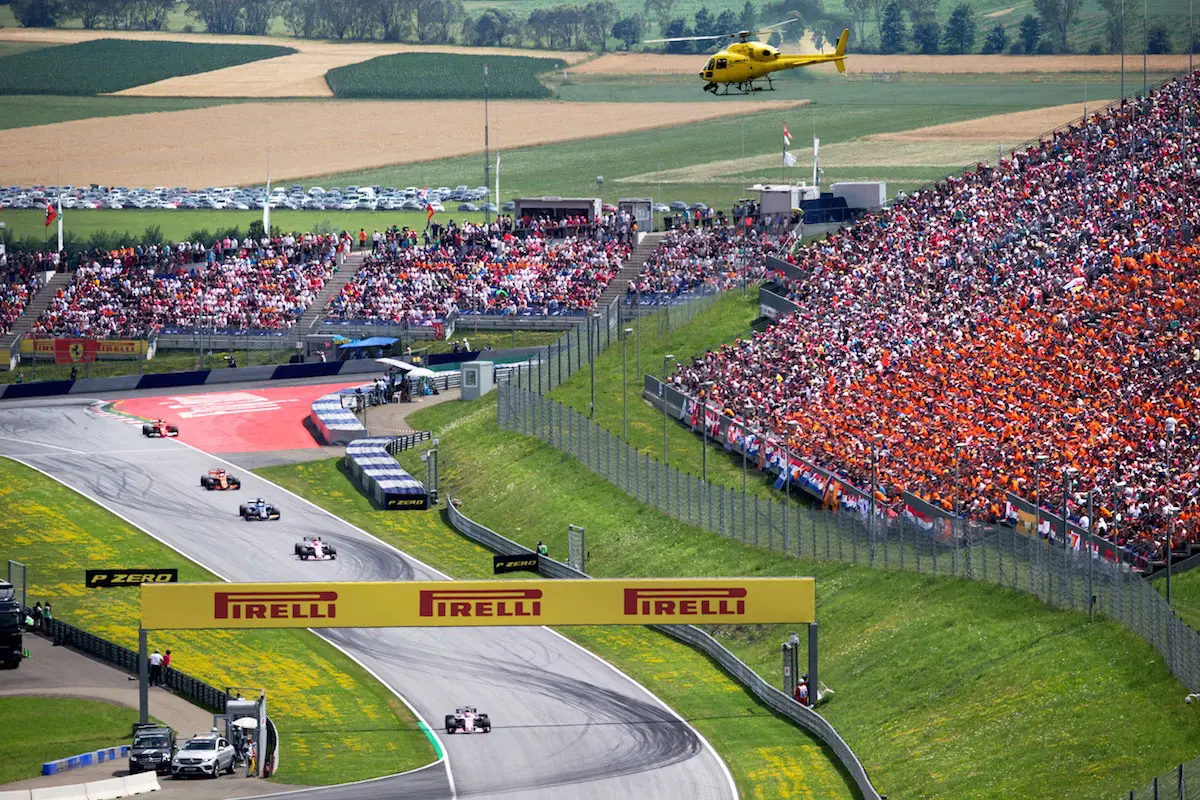Are you a fan of Formula 1 and looking for an unforgettable race weekend? If so, you should consider attending the Austrian Grand Prix, one of the oldest and most historic races on the calendar.
The Austrian Grand Prix takes place at the Red Bull Ring, a stunning circuit surrounded by the Styrian mountains that offers thrilling racing and a great atmosphere. In this ultimate guide, we will tell you everything you need to know about the Austrian Grand Prix, including its history, facts and tips.
You will learn about the origins of the race, the best grandstands and tickets, how to get to the circuit, what to do and see in the region, and more.
F1worldwide.com Recommends
- Austrian GP Circuit – A Corner-by-Corner Breakdown
- Qatar GP: Why You Should Visit This Amazing F1 Destination
- Yuki Tsunoda: The Japanese F1 Driver Making Waves
- Yuki Tsunoda as a Child
- Everything you need to know about Max Verstappen
- After Posting REVEALING Pictures Kelly Piquet SAVAGED
Whether you are planning to go to the race in 2023 or just want to learn more about it, this guide will help you make the most of your experience. Read on and get ready for an amazing adventure at the Austrian Grand Prix!
Index Of The Article
- The History Of The Austrian Grand Prix
- When Is The 2023 Austrian Grand Prix?
- The Red Bull Ring Layout
- The Best Stands To Watch The Austrian Grand Prix–Why
- How To Buy Tickets For The Austrian Grand-Prix
- How Much Do Austrian Grand Prix Tickets Cost?
- How To Get To The Red Bull Ring
- Which F1 Driver(s) Has Won The Most Times At The Austrian Grand Prix
- The Austrian Grand Prix – Some Facts To Impress Your Friends
The History Of The Austrian Grand Prix
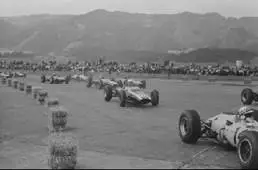
The first Austrian Grand Prix took place in 1963 at the Zeltweg Airfield, a military base near Graz.
It was a non-championship event that attracted some of the top drivers of the era. These included Jack Brabham, Jim Clark and John Surtees. Brabham won the race by five laps in his own Brabham BT3. Clark suffered a suspension failure and Surtees retired with engine problems.
The race was a success, but the track was deemed too dangerous and bumpy for Formula One standards.
In 1964 It Became An Official F1 Event
The following year, the race joined the official calendar and was won by Lorenzo Bandini in a Ferrari. It was his only victory in Formula One. It also marked the debut of local hero Jochen Rindt, who finished ninth in a Brabham.
The Zeltweg Airfield hosted one more race in 1965. This was a non-championship event for sports cars. It was replaced by a new permanent circuit in the nearby town of Spielberg.
The Österreichring In Spielberg
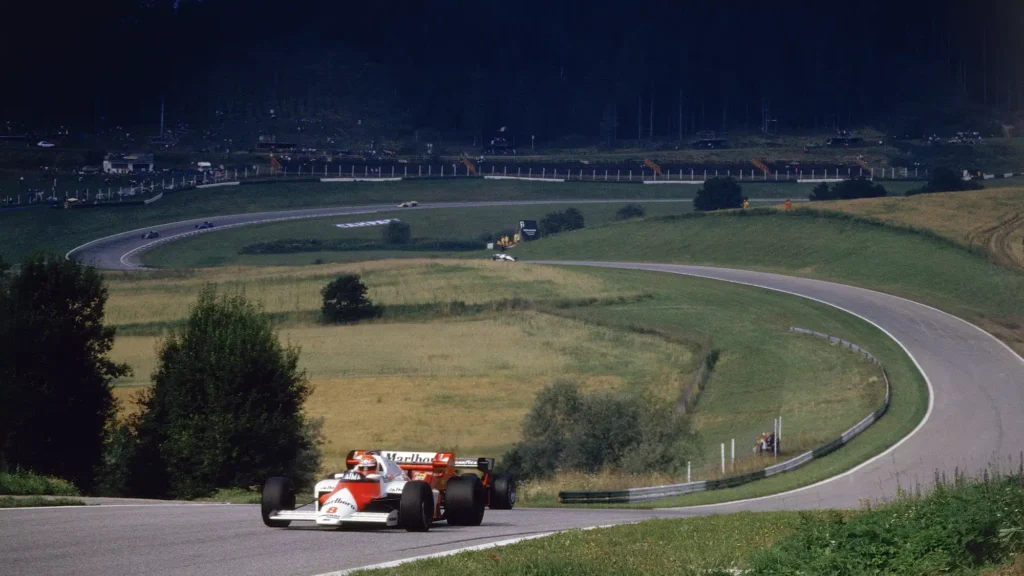
The Österreichring, as it was called, was a fast and flowing track that featured long straights and sweeping corners. It was built in the scenic Styrian mountains and offered spectacular views for the spectators.
The first race at the Österreichring was held in 1970. It was dominated by Ferrari, with Jacky Ickx and Clay Regazzoni finishing first and second.
Rindt Became A Posthumous Champion
Rindt, who had become a world champion posthumously after his fatal crash at Monza, made his last appearance at his home race and qualified on pole position.
The Österreichring became a popular venue for drivers and fans alike, as it provided exciting and challenging racing.
The track witnessed some memorable moments, such as
- Jo Siffert’s dominant win for BRM in 1971
- Emerson Fittipaldi’s mature victory for Lotus in 1972 that boosted his title bid,
- Ronnie Peterson’s controversial win over his team-mate Fittipaldi in 1973 after a team order dispute,
- Carlos Reutemann’s peerless drive for Brabham in 1974.
- Vittorio Brambilla’s maiden win for March in 1975 in a rain-shortened race that saw him crash into the barriers after crossing the finish line.
The Austrian Grand Prix also produced some surprising winners, such as
- John Watson for Penske in 1976
- Alan Jones for Shadow in 1977
- Jean-Pierre Jabouille for Renault in 1980.
Jean-Pierre Jabouille’s was also the first win for a turbocharged car in Formula One history.
The track also saw some dramatic incidents, such as
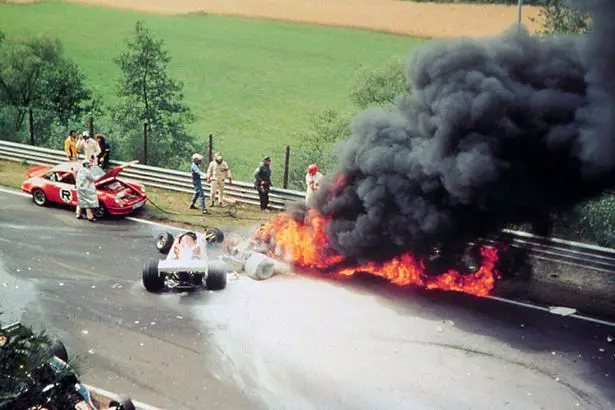
- Niki Lauda’s fiery crash in 1976 that nearly cost him his life.
- Gilles Villeneuve’s airborne accident in 1980 that destroyed his Ferrari.
- Nelson Piquet’s spectacular overtaking move on Ayrton Senna in 1986 that involved sliding sideways through a corner.
The Österreichring hosted its last race in 1987. It was deemed too fast and unsafe for modern Formula One standards.
The track was modified and shortened to 4.3 km (2.7 miles) and renamed as the A1-Ring.
The Austrian Grand Prix Returned In 1997
The Austrian Grand Prix returned to the calendar in 1997 after a decade-long absence.
It was won by Jacques Villeneuve for Williams. The A1-Ring saw some close and competitive races, such as
- Mika Hakkinen’s narrow win over Michael Schumacher in 1998.
- David Coulthard’s surprise victory for McLaren in 2001 after Schumacher slowed down to let his brother Ralf finish second.
- Schumacher’s controversial win in 2002 after his team-mate Rubens Barrichello let him pass on the final lap under team orders.
The Austrian Grand Prix was dropped from the calendar again after 2003 due to financial reasons.
The Red Bull Ring
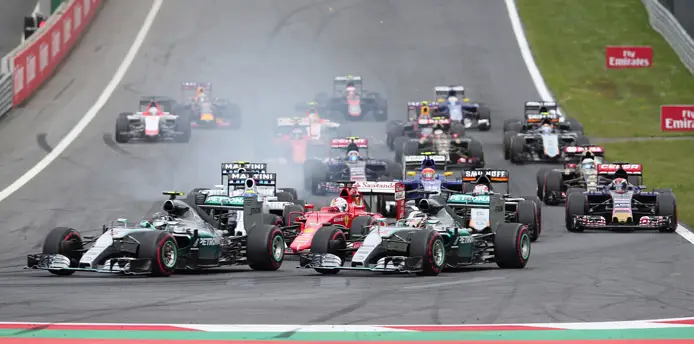
The track was bought by Red Bull founder Dietrich Mateschitz. It underwent another renovation and expansion to 4.3 km (2.7 miles).
It was renamed as the Red Bull Ring and hosted its first race in 2014 after an 11-year hiatus.
The race was won by Nico Rosberg for Mercedes, who beat his team-mate Lewis Hamilton after a close battle.
The Red Bull Ring has since become a regular fixture on the calenda. It has seen someepic races, such as
- Max Verstappen’s comeback win for Red Bull in 2018 after starting from fourth on the grid.
- Max Verstappen in the Red Bull Racing RB15 was the first win for a Honda-powered F1 car since Jenson Button in the 2006 Hungarian Grand Prix and he also became the first non-Mercedes driver to win a race in 2019.
- Verstappen’s dominant win in 2021 after leading every lap.
- Charles Leclerc’s 2023 win over Max Verstappen who came in 2nd.
The Austrian Grand Prix is a race that has witnessed many changes over the years, but has always maintained its charm and character. It is a race that celebrates speed, skill and spectacle, and has given us some of the most memorable moments in Formula One history.
When Is The 2023 Austrian Grand Prix?
The Austrian Grand Prix is being held on the weekend of the 30th June to 2nd July 2023 The format for the weekend includes a Sprint Qualifying run on Friday 30th June.
| Date And Time |
|---|
| 02 JULY Race 15:00 |
| 01 JULY Sprint 16:30 – 17:30 |
| 01 JULY Sprint Shootout 12:00 – 12:44 |
| 30 JUNE Qualifying 17:00 – 18:00 |
| 30 JUNE Practice 1 13:30 – 14:30 |
The Red Bull Ring Layout
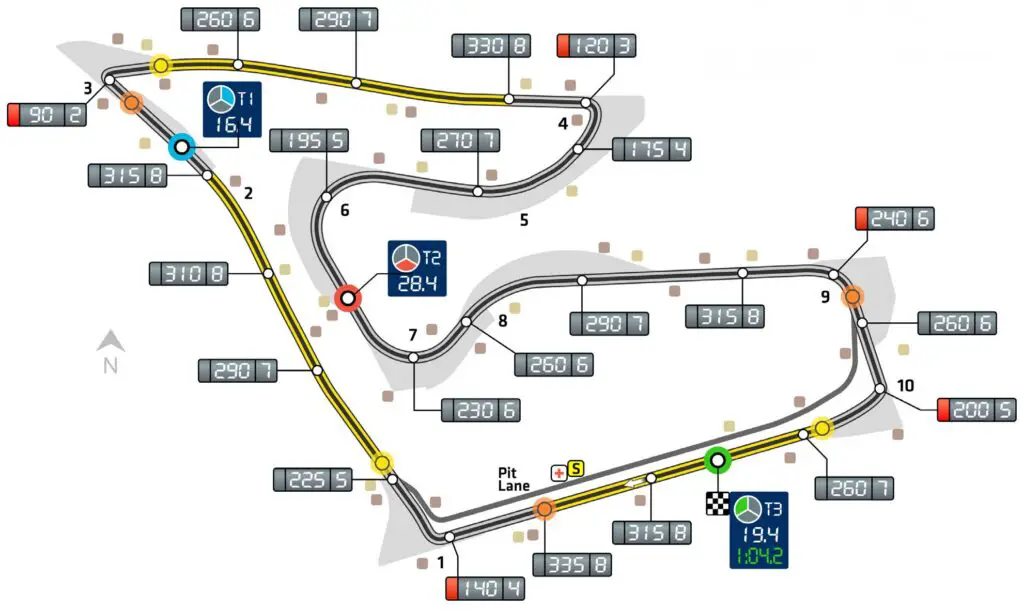
The circuit is owned by Red Bull, the energy drink company that also owns the Red Bull Racing Formula One team.
The circuit has a history that dates back to 1969, when it was first built as the Österreichring. It was a fast and flowing track that featured long straights and sweeping corners, and was popular among drivers and fans.
Red Bull bought the track and renovated it, expanding it to 4.3 km (2.7 miles) and adding some new features. The circuit was renamed as the Red Bull Ring and returned to the Formula One calendar in 2014.
The Red Bull F1 circuit is a short and technical track that challenges the drivers and teams.
It has 10 turns, six of them right-handers and four left-handers.
It has three long straights that allow for high speeds and overtaking opportunities, but also some tight corners that require good braking and traction.
The track has a lot of elevation changes, as it is built on a hillside, and some blind crests that add to the difficulty.
The track also has some unique elements, such as a bull sculpture at turn one, a giant ring at turn two, and a tower that displays the lap times at turn three.
The circuit is also a home for Red Bull Racing, as it is where they test and train their cars and drivers. The circuit is a showcase of Red Bull’s passion and commitment to motorsport.
The Best Stands To Watch The Austrian Grand Prix – Why
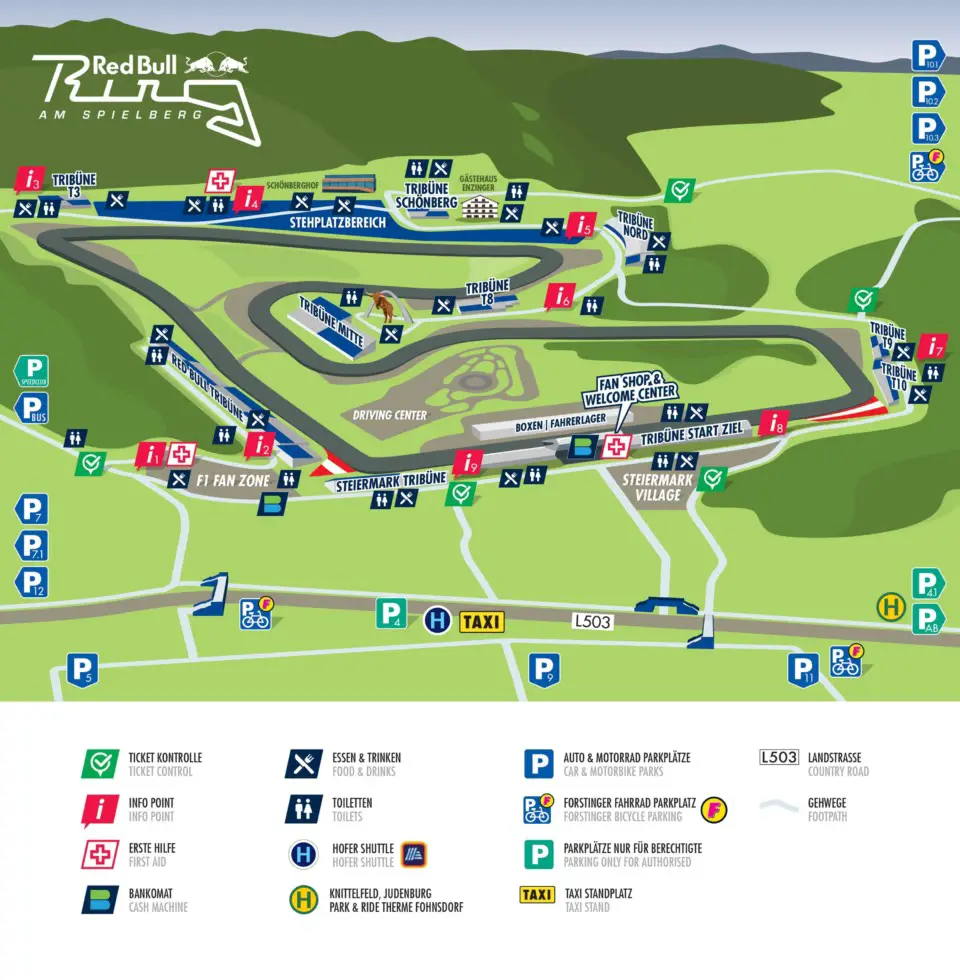
The track offers spectacular views of the Styrian mountains and the countryside, as well as some thrilling overtaking opportunities and close battles. But where are the best places to sit and watch the action unfold? Here are some of the best stands to watch the Austrian Grand Prix and why.
Red Bull Grandstand
The Red Bull Grandstand is arguably the best stand at the Red Bull Ring, as it offers unobstructed views of the cars for much of a lap.
The grandstand is located just after turn one, a tight right-hander that often sees some drama at the start and during the race.
rom here, you can see the cars accelerate up the hill towards turn two, a fast left-hander that leads to turn three, a steep uphill right-hander that is one of the best overtaking spots on the track.
You can also see the cars speed down the straight between turns six and seven, and negotiate turns eight and nine in the distance. The grandstand has a big screen in front of it, so you can catch all the on-track moves and follow the race.
The grandstand is also right by the F1 Village, where you can find food, drinks, merchandise, and entertainment.
Steiermark Grandstand
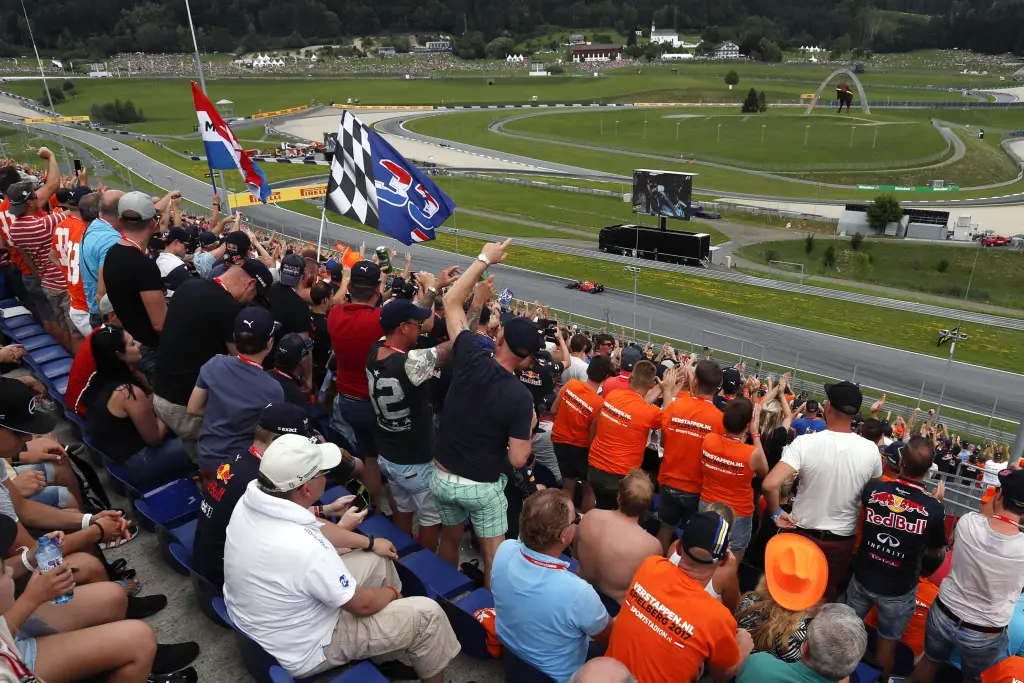
The Steiermark Grandstand is another great option for watching the Austrian Grand Prix, as it offers views of the pit straight and turns one, two, and three.
The grandstand is situated just behind turn one, where you can see the cars line up on the grid for the start, and witness any collisions or overtakes at this crucial corner.
You can also see the cars exit the pit lane and rejoin the track, as well as some pit stops in action. The grandstand has a big screen opposite it, so you can keep track of the race and lap times.
The grandstand is named after the region of Austria where the track is located, and has a dedicated catering area behind it.
T9 and T10 Grandstand
T9 and T10 Grandstand
The T9 and T10 Grandstand is a good choice for watching the final sector of the track, where you can see some close racing and last-minute moves.
The grandstand is located on the outside of turn nine, a fast right-hander that leads to turn 10, a slow left-hander that is the last corner before the main straight.
From here, you can see the cars brake hard for turn 10 and try to get a good exit for a possible overtake on the pit straight. You can also see some action at turn eight, a sharp left-hander that precedes turn nine. The grandstand has a big screen in front of it, so you can follow the race and lap times.
General Admission
If you prefer to roam around and explore different vantage points, you can opt for a general admission ticket that gives you access to several grassy areas around the track. Some of the best spots for general admission are:
- The hill between turns one and two, where you can see both corners and part of turn three
- The hill between turns three and four, where you can see both corners and part of turn five
- The hill between turns four and five, where you can see both corners and part of turn six
- The hill between turns six and seven, where you can see both corners and part of turn eight
- The hill between turns eight and nine, where you can see both corners and part of turn 10
These areas offer panoramic views of the track and the scenery, but they can get crowded and have limited facilities. You may also need to bring your own chairs or blankets to sit on.
The Austrian Grand Prix is a race that offers a lot of excitement and spectacle for both drivers and fans. Whether you choose a grandstand or a general admission ticket, you will be able to enjoy some of the best views of Formula One racing in a stunning setting.
How To Buy Tickets For The Austrian Grand Prix
To purchase tickets for the Canadian Grand Prix, you have a few options:
Official Formula 1 Website
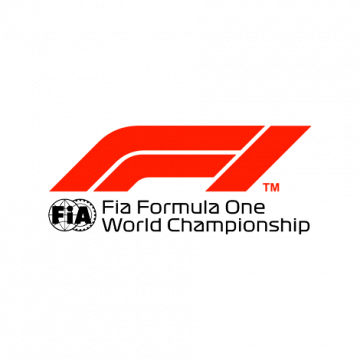
The official Formula 1 website is the primary source for purchasing tickets.
Visit the website and navigate to the Canadian Grand Prix event page.
There, you will find ticket options for various grandstands and general admission areas. Select the desired seating or package, add it to your cart, and proceed to checkout. Follow the instructions to complete your purchase securely.
Authorized Ticket Resellers
There are authorized ticket resellers who offer Canadian Grand Prix tickets.
These resellers often provide different packages and options, including hospitality packages, hotel accommodations, and additional perks.
Ensure that you purchase tickets from reputable resellers to avoid scams or counterfeit tickets. Check for authorized reseller listings on the official Formula 1 website or search for trusted resellers online.
Travel Agencies and Tour Operators
Travel agencies and tour operators may offer Canadian Grand Prix packages that include not only tickets but also accommodations, transportation, and other amenities.
These packages can provide a convenient and hassle-free experience for attending the race. Research and compare different agencies, considering factors such as reputation, customer reviews, and package inclusions.
How Much Do Austrian Grand Prix Tickets Cost?
the ticket prices vary depending on the type of ticket, the location of the seat, and the duration of the event. Here are some examples of ticket prices from different sources:
- F1austria.com offers a range of tickets from 94 EUR for a 3-day general admission ticket to 7890 EUR for a 3-day Paddock Club ticket1.
- Grand Prix Events sells tickets from $464.88 for a 3-day grandstand T8 ticket to $496.03 for a 3-day grandstand T3 ticket.
- F1 Experiences provides packages that include tickets and other exclusive activities, such as a guided track tour, a reception with a Formula One driver, and F1 insider access. The packages start from $1067 for a 3-day starter package with a turn 10 ticket to $1859 for a 3-day trophy package with a choice of grandstand tickets.
How To Get To The Red Bull Ring
There are different ways to get to the Austrian Grand Prix depending on your starting point and preferred mode of transport. Here are some options:
- By car: Driving is the best way to get to the circuit, especially if you intend to camp. The Red Bull Ring is located near Spielberg, a small town in the south-east of Austria. The nearest large city is Graz, some 75km away. Vienna is about 200km away. You can hire a car at the airport or drive from your home country. There are free parking areas near the circuit and you can also bring bicycles to cycle from the parking zones to the bike parks near the circuit.
- By plane: The closest airport is in Graz, around 85km from the Red Bull Ring. However, it has a limited number of flights and connections. The best choice is Vienna International Airport, 200km from the circuit, which offers a wide range of flights from different destinations. You can then take a train, bus or car to the circuit.
- By train: The closest train station to the Red Bull Ring is at Knittelfeld, which is connected to most major cities in Austria. The trip from Vienna to Knittelfeld takes around 3 hours. The hourly train service from Graz to Knittelfeld takes around 80 minutes with one change along the way in Bruck. There are free shuttle buses from Knittelfeld station to the circuit on Friday, Saturday and Sunday at regular intervals.
- By bus: There are long-distance bus services from over 170 places in Austria (including Salzburg, Carinthia and Styria) to the Red Bull Ring at the 2023 Austrian Grand Prix. You can book your tickets online and choose your departure and arrival times.
Which F1 Driver(s) Has Won The Most Times At The Austrian Grand Prix
The F1 drivers who have won the most times at the Austrian Grand Prix are:
- Jo Siffert, Alain Prost and Max Verstappen, with 3 wins each
- Mika Häkkinen, Michael Schumacher and Nico Rosberg, with 2 wins each
- 23 other drivers, with 1 win each
The most recent winner of the Austrian Grand Prix is Max Verstappen, who won the 2023 race for Red Bull Racing. He also won the 2018 and 2019 races for the same team.
The other drivers who have won the race since its return to the calendar in 2014 are Nico Rosberg (2014 and 2015), Lewis Hamilton (2016), Valtteri Bottas (2017 and 2020), and Charles Leclerc (2021).
The Austrian Grand Prix – Some Facts To Impress Your Friends
The Austrian Grand Prix is one of the oldest and most historic races on the Formula 1 calendar. It has been held at different venues and under different names over the years, but it always delivers exciting racing and a great atmosphere. Here are some interesting facts about the Austrian Grand Prix:
The First Austrian Grand Prix
The first Austrian Grand Prix was held in 1963 at the Zeltweg Airfield, a temporary track built on aircraft runways. It was won by Lorenzo Bandini for Ferrari, but the race was not very popular due to the poor quality of the track.
The Move To Österreichring, in 1970
The race moved to a new permanent circuit, the Österreichring, in 1970. The original Österreichring was a fearsome, high-speed circuit with limited run-off areas that tested both the skill and nerve of the drivers.
A chicane was added in 1976 following a series of dangerous accidents, but the circuit remained frighteningly fast.
By the mid-1980s, turbo-era cars were lapping the Österreichring at an average of more than 250 km/h! The last race at the Österreichring was in 1987, when Nigel Mansell won for Williams.
The A1 Ring
After a ten-year absence, Formula 1 returned to Austria in 1997 at a completely redesigned and shortened circuit, the A1-Ring.
The new name came courtesy of funding from a telecommunications company. The A1-Ring hosted seven races between 1997 and 2003, including the infamous 2002 Austrian Grand Prix when Michael Schumacher used team orders to take the win from teammate Rubens Barichello on the final lap.
This proved highly unpopular with fans and led to the FIA fining Ferrari $1 million and changing the sporting regulations to prevent team orders from artificially affecting race results.
F1 Was Cancelled In 2004
The Austrian Grand Prix lost its place on the calendar again in 2004, this time due to the country’s support for anti-tobacco legislation in the European Union.
Red Bull Buys The Ring
The circuit was bought by Austrian billionaire Dietrich Mateschitz, the owner of Red Bull, who redeveloped it and renamed it the Red Bull Ring. The Austrian Grand Prix returned to the Formula 1 calendar in 2014 with an initial seven-year contract to host the race. A multi-year contract extension was reportedly signed in 2020.
During The Coronavirus Pandemic Two F1 Races Where Held In 2020
The Red Bull Ring hosted the first two rounds of the 2020 Formula 1 World Championship. This happened after the start of the season was delayed due to the coronavirus pandemic. The second race at the circuit was named the Styrian Grand Prix, after the region where it is located. The same scenario repeated in 2021, with Max Verstappen winning both races for Red Bull.
McLaren And Ferrari Have Won The Most Times
McLaren is tied with Ferrari for the most wins at the Austrian Grand Prix, with six each. McLaren’s first win came in 1984 with Niki Lauda. He became the first Austrian driver to win a Formula 1 Grand Prix on home soil. Alain Prost followed that up with two wins in a row in 1985 and 1986. McLaren’s last win in Austria was in 2001 with David Coulthard.

